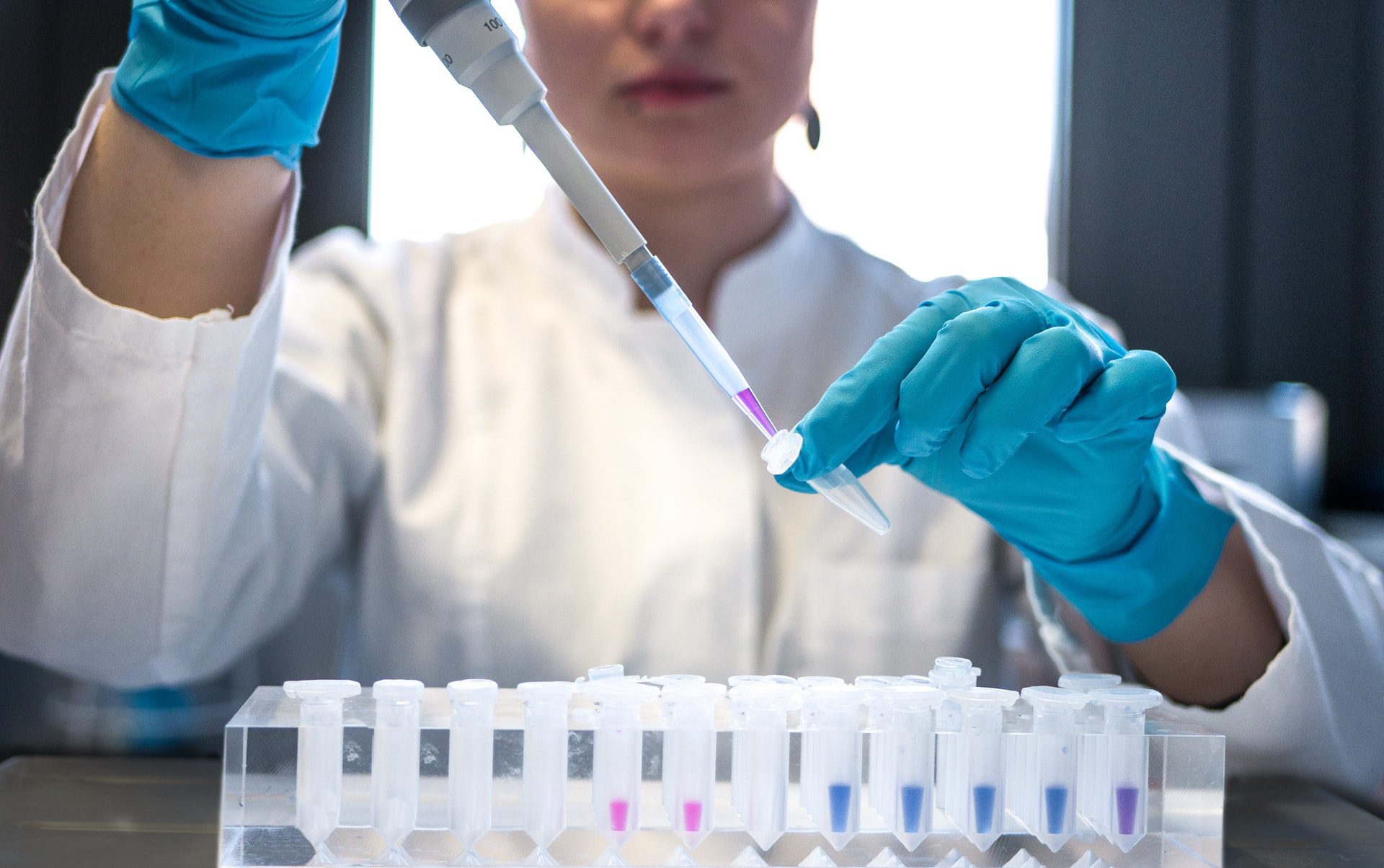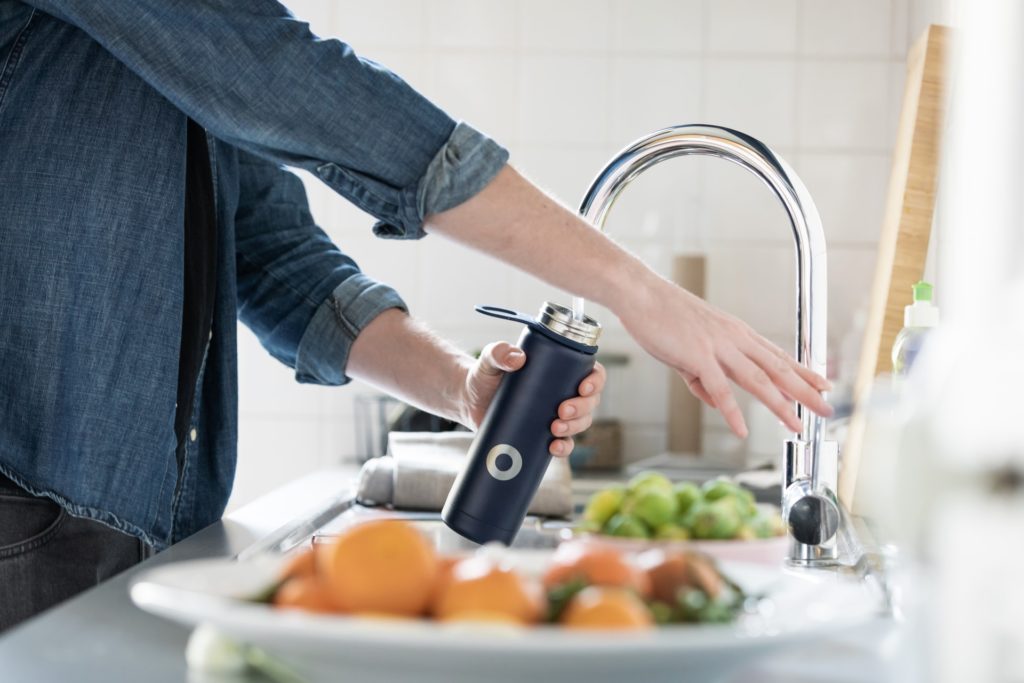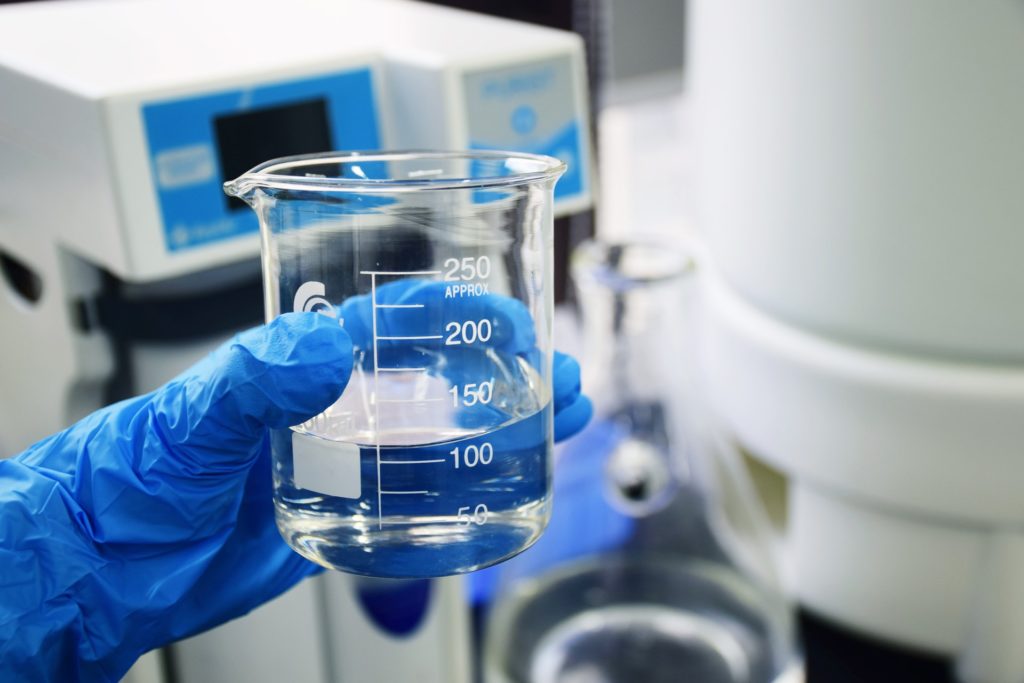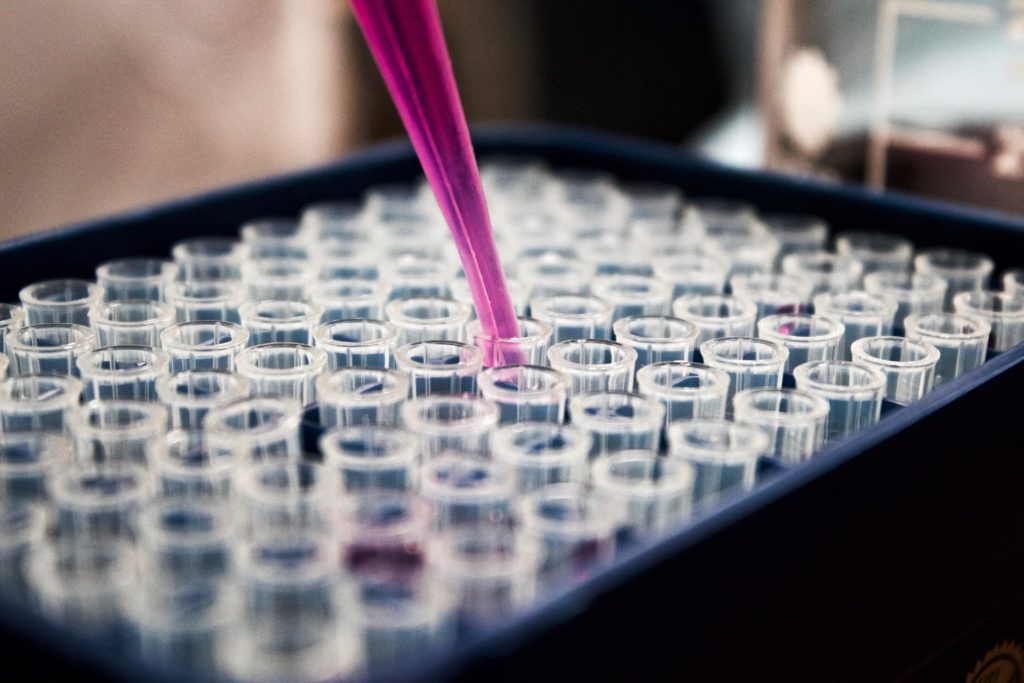07/04/2022 | pH | 10 MINUTE READ
Does Chlorine Raise or Lower PH?

Chlorine measurements are regularly used during industrial processes to ensure the water quality has reached a certain standard and that any chlorine disinfection techniques have been effective. When free chlorine is present in drinking water, this indicates that the water can avoid becoming recontaminated in storage and that a high amount of chlorine has been added to the water to eliminate any viruses and bacteria.
Suppose you measure chlorine levels in drinking water and find that some chlorine remains. In that case, likely, there aren’t any disease-causing organisms in the water, which increases the likelihood that the water is potable. When performing free chlorine measurements, pH is among the most critical elements of the measurement. The pH levels in the water must come in at around 6.5-7.5 for the free chlorine measurement to be accurate when telling you how much chlorine is present in the water.

Free chlorine testing can be performed with several tools or equipment. If chlorine testing is being done for industrial processes, these facilities will use free chlorine analyzer systems that can provide precise measurements on a large-scale basis. The instruments that can be used for measuring free chlorine include amperometric analyzers and colorimetric tests.
When looking at colorimetric tests, you can use either a manual testing method or an automated colorimetric test. While colorimetric tests provide users with accurate measurements, they could be better for real-time measurements. Amperometric analyzers contain chlorine sensors that immediately take pH levels into account. The following guide comprehensively examines chlorine and its effect on pH levels.
What Are Chlorine Measurements Used For?
Measuring free chlorine is mainly done for two reasons: dosage testing and monitoring chlorination compliance for different projects. Dosage testing is a common treatment technique used to identify the amount of chlorine needed to maintain proper free chlorine levels in drinking water. When using this method to adjust chlorine levels, it’s possible for drinking water to be stored for anywhere from 4-24 hours.
The goal of dosage testing differs entirely from the objective that piped water treatment systems focus on. The purpose of a piped treatment system is to provide proper disinfection at the numerous endpoints throughout the system, which are usually water taps.
Free chlorine levels must be around 0.5 mg/L to ensure that the overall quality of water is maintained throughout the distribution network. However, more than these chlorine levels are needed when storing the water in your home. In this situation, dosage testing can be helpful to identify how much chlorine should be added to the water before it’s stored.
When performing dosage testing, it’s recommended that the free chlorine content in water is around 2.0 mg/L or less after 30 minutes of adding sodium hypochlorite, which ensures that the water doesn’t have a foul odor or taste. Once 24 hours have passed after the water was first stored and sodium hypochlorite was added, the water should have free chlorine levels of 0.2 mg/L or higher.
Remember that the Safe Water System Program maintains a methodology that is considerably different from the WHO guidelines, the latter of which requires free chlorine levels of 0.5 mg/L or higher. The SWS recommends that free chlorine levels are regularly tested in all households to determine how much chlorine is found in the drinking water.

Why Does PH Matter in a Free Chlorine Measurement?
Once you add chlorine to water, a hypochlorite ion and hypochlorous acid are formed. When combined, these substances create free chlorine. The hypochlorous acid in this solution is the chemical that eliminates any pathogens and bacteria that are currently present in the water. Pathogens can cause diseases and illnesses to spread, which is why it’s crucial for drinking water treatment facilities to rid water of any pathogens.
Remember that amperometric measurements can only detect how much hypochlorous acid is in the water. This acid will be reduced with the measuring electrode, which effectively tells the sensor the free chlorine concentration.
The system’s pH will determine what types of pathogens or bacteria are in the water and the concentration of these contaminants. When the water contains pH levels higher than 8.0, there is likelyn’t much hypochlorous acid in the solution, making it more difficult for amperometric sensors to identify free chlorine.
If the pH readings return to around 7.0, this is the preferred reading for a free chlorine amperometric measurement. It’s also crucial that substantial pH fluctuations don’t occur. In this situation, the accuracy of the measure could be at risk. Obtaining an accurate measurement will be challenging when pH levels are higher than 8.5. Using a combination of differential pH sensors is highly recommended for precise pH readings.
What Is the Process of Free Chlorine Testing?
You can use a range of tools when you want to perform free chlorine testing, the primary of which include pool test kits, digital colorimeters, and color-wheel test kits. Each method identifies how much chlorine is in the water via a color change. The intensity of this color allows the individual measuring chlorine concentration to determine what the chlorine levels are and if they match the intended concentration.
Manual Free Chlorine Testing
When looking specifically at pool test kits, these use a liquid chemical OTO that can alter the color to yellow if the water contains total chlorine. Once the tube has been filled with water, all you need to do is place around 1-5 drops of this chemical solution into the water, after which a color change should occur. Pool test kits can be found in many retail stores and online stores like Amazon.com. Remember that free chlorine can’t be measured with a pool test kit.
The main advantages of using a pool test kit include affordability and an easy-to-use interface. On the other hand, these test kits can create inaccurate readings over time and don’t provide quantitative results. While the affordability of these test kits is beneficial, the low cost means there needs to be more standardization and calibration with these kits.
Color-wheel test kits use tablet chemical DPDs or powders to create a color change. The water will change to pink when chlorine is present. The intensity of the color determines how much chlorine is in the water. Color wheels are usually less expensive than their digital meter counterparts due to their simplistic design. A color wheel matches a total or free chlorine reading with a color. These test kits provide a chlorine range of 0-3.5 mg/L.
This type of measurement is beneficial if you’d like to use a low-cost tool that can provide relatively accurate readings if used correctly. On the other hand, color-wheel test kits need more standardization and calibration when compared to digital meters. There’s also a higher possibility of user error.

Digital Free Chlorine Testing
Digital colorimeters are the most precise tools for measuring water’s free or total chlorine concentrations. Colorimeters can use a powder or DPD tablet to create a color change. The vial of water is then placed into a meter to identify how intense the color change is. These meters can provide readings that extend from 0-4 mg/L.
The main benefits associated with digital colorimeters include quick results and precise readings. However, there are a couple of drawbacks to using digital colorimeters, including a high cost compared to other options and the need to calibrate the sensor with specific standards.
Choosing the correct type of measurement to calculate chlorine concentration depends on numerous factors, including everything from the method’s cost and accuracy to the total number of samples that need to be tested. Remember that the option to test chlorine levels depends on your data use. If you’re currently set to perform dosage testing for a large-scale project, opting for a digital colorimeter to obtain precise readings is highly recommended. Accuracy is necessary to ensure proper dosage.
If you use the measurement to determine if homeowners properly use chlorine, you shouldn’t need more than a pool test kit. This kit will give you a good idea if total chlorine is present in the water. If the primary goal of your project is to identify if the right amount of chlorine is being added to the water, a color-wheel kit may suffice and will provide you with more accurate readings than a pool test kit.

Does Chlorine Impact pH?
Understanding the interaction between chlorine and pH is essential. Chlorine measurements are vital in ensuring water quality and the effectiveness of disinfection processes in various industrial applications. Free chlorine in drinking water indicates effective disinfection, and pH is critical in accurate free chlorine measurements. For accurate readings, the pH levels should fall within the range of 6.5 to 7.5.
Different tools are used for free chlorine testing, including amperometric analyzers and colorimetric tests. While amperometric analyzers provide precise measurements on a larger scale, colorimetric tests offer accuracy but may not be suitable for real-time measurements.
The Purpose of Chlorine Measurements
Chlorine measurements serve two primary purposes: dosage testing and monitoring chlorination compliance. Dosage testing determines the required chlorine amount to maintain proper levels in drinking water for safe storage. Piped treatment systems aim to disinfect water throughout distribution networks, requiring a free chlorine level of around 0.5 mg/L. Dosage testing helps adjust chlorine levels to ensure water quality during storage.
Significance of pH in Free Chlorine Measurement
When added to water, chlorine forms hypochlorous acid and hypochlorite ions, creating free chlorine. Hypochlorous acid eliminates pathogens, making water safe to drink. Amperometric measurements detect hypochlorous acid, which interacts with pH levels. Higher pH levels reduce hypochlorous acid, affecting accurate amperometric measurements. A pH of 7.0 is preferred for precise free chlorine amperometric readings, and stability in pH is crucial to maintain measurement accuracy.
Free Chlorine Testing Process
Several tools can be used for free chlorine testing, including pool test kits, digital colorimeters, and color-wheel test kits. Pool test kits use liquid chemical OTO to change color when total chlorine is present, offering a simple and affordable option. Color-wheel test kits use tablet chemical DPDs to match color intensity with chlorine levels, which is suitable for relatively accurate results.
Digital colorimeters are the most accurate tools for measuring free chlorine concentrations. They provide quick and precise readings through color changes and are ideal for projects requiring proper dosage testing. Choosing the correct measurement method depends on cost, accuracy, and the intended use of the data.
Conclusion
Measuring chlorine levels will help you determine the water’s current quality and if additional treatment must be done before consuming the water or using it for industrial processes. When chlorine levels are too high, the water’s pH will start to decrease, which can eventually lead to corrosion. However, liquid chlorine has a pH of 13 and can cause the water’s pH to increase. Now that you understand how chlorine affects water, you should be able to use this chemical to disinfect water and remove any harmful pathogens.
Posted by Dominic O'Donnell on July 4, 2022
Sensorex is a global leader in the design and manufacture of quality sensors for water quality and process applications. The company offers more than 2000 sensor packages for pH, ORP, conductivity, dissolved oxygen, free chlorine, chlorine dioxide, UV transmittance and other specialty measurements, as well as a full line of sensor accessories and transmitters. Its expert technical support engineers solve analytical sensor challenges with custom designs and off the shelf products.




